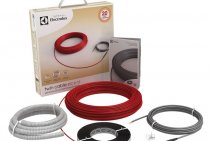Classic solid fuel boilers.
This is the most "ancient" type of equipment that appeared long before gas, electric and liquid fuel analogues. The principle of fuel combustion is similar to the principle of combustion in a traditional furnace - loading a portion of fuel into the combustion chamber, burning, unloading combustion products, new loading.
Classical boilers are characterized by low cost, low efficiency, inability to clearly control the combustion process and require regular maintenance several times a day - cleaning the furnace and loading a new portion of fuel.
At the same time, these are, as a rule, completely autonomous systems that do not depend on electricity. If you have limited financial resources and a small area of heated premises, a classic solid fuel boiler is an acceptable option.
To date, solid fuel boilers are usually divided into three groups
- Classic solid fuel boilers.
- pyrolysis boilers.
- Universal solid fuel boilers.

Classic solid fuel boilers have a rich history, but even with a long history, they have not lost their popularity at all, thanks to energy independence. This is an autonomous heating system that does not require engineering communications, including electricity. And all they require is firewood, of which there is always an abundance outside the city. Modern traditional solid fuel boilers are produced with technological automation, which allows you not to control the operation of the heating system and at the same time the temperature in the house will be at a given level. The main task is to always have firewood in the required volume and in a dry form, and the boiler will do the rest.

Pyrolysis boilers have the highest efficiency of all solid fuel equipment and this, of course, is their main advantage. And this is achieved due to the fact that they also burn the wood gas formed during combustion, which also releases heat. This suggests that this type of heating is more economical in relation to fuel. In addition, during the operation of pyrolysis boilers, soot and ash are practically not formed. But the cost of these boilers is higher than other representatives of solid fuel equipment.
Universal solid fuel boilers can be converted into gas or diesel heating equipment, and all thanks to the fact that they are equipped with a replaceable burner, which can later be replaced with diesel or gas. This heating option will be especially convenient in case of frequent gas outages, when you can have a backup option on hand.
What is necessary for the boilers to work?
For the normal operation of solid fuel boilers, it is necessary to ensure:
Boiler room - this is not about a room, but about a group of equipment that will allow optimal operation of the boiler at startup
Each model and type has its own list of necessary equipment, but in the standard version it is a circulation pump, expansion tank, mixing group and comb.
The chimney is a necessary measure for a solid fuel boiler, and it is extremely important that it is correctly dimensioned, since insufficient and excessive draft can adversely affect the operation of the boiler.
The heating system itself in the face of pipes and radiators.
Not superfluous, although optional, is a boiler that will provide your home with hot water.
Well, of course, the correct installation of a solid fuel heating system is a necessary measure for the normal operation of solid fuel boilers.
How to calculate the power and characteristics of the boiler

The calculation of the boiler power is calculated on average 1 kW per 10 m 2. With a room quadrature of 100 m 2, the boiler power will be 10 kW. These calculations have an error, since climatic conditions differ in different regions of the country. You should also take into account the heat loss of the building, the insulation of walls, windows, doors. For the southern regions 0.8 - 1 kW per 10m 2, for the middle lane 1-1.5 kW per 10 m 2. For harsh northern regions 1.5 - 2.0 kW per 10 m 2. In the presence of warm floors, the boiler power increases and is calculated with the help of specialists, based on a specific case. Also, each additional consumable node increases the number of kW of power.
It should be noted that when choosing a solid fuel unit, it is required to take into account the energy dependence of the boiler, for example, the presence of an electric hair dryer or heating element that heats the air in the boiler. If there is a power outage in your area, you will need to purchase a powerful uninterruptible power supply or a generator of sufficient power.
Another important attribute of the heating system of a solid fuel boiler is a buffer tank or a heat accumulator. These attributes will be needed by owners of houses with a large quadrature or multi-storey cottages. In such cases, without the use of a buffer tank or a heat accumulator, fuel consumption increases. The dimensions of the boiler and its auxiliary units require a separate room. It is convenient to place them in basements or semi-basements. In addition, fire safety requirements also require the location of the heating unit in a separate room. This room must necessarily be equipped with ventilation to ensure sufficient air flow. Without ventilation, the fire brigade has the right to impose a fine or prohibit the operation of the boiler.
You should also focus on adjusting the draft, the intensity of the air supply to the combustion chamber during the operation of wood-fired boilers. On the one hand, with a decrease in thrust, the fuel does not burn intensively, but gradually smolders
This naturally increases the burning time of firewood, reducing the cost of funds for the further purchase of fuel. But such pluses entail no less big minuses, since the combustion temperature drops significantly, which leads to very rapid clogging of the chimney and the inside of the boiler, that is, wood soot in the form of resin settles on the walls, which is very difficult to remove. And the time between cleaning the boiler and the chimney is significantly reduced, and this process is very complicated, unpleasant and “dirty”. Such problems are inherent in relatively inexpensive, mechanical units that are not stuffed with electronics, which itself calculates the amount of air supplied to the combustion chamber and the intensity of combustion.
The total amount of financial investments for the heating system can range from 30,000 to 500,000 rubles, depending on the complexity of the system, the units themselves and the specific building. This amount does not include the cost of connection and installation work.
Distinctive features of gas-firewood boilers
"gas-firewood"
belongs to the first type. It is designated by the letters T. G. Solid fuel for it is firewood, coal, briquettes, pellets. The equipment is convenient for those who are just planning to conduct gas to the house in which they already live.
The material for the manufacture of the boiler furnace are steel and cast iron, so the equipment is placed on the floor. Moreover, for a boiler with a cast-iron furnace, strengthen the foundation.
There are single-circuit and double-circuit models of boilers. single circuit
can only heat the room, double-circuit
additionally provide the house with hot water. Heat exchange units supply 700 liters of hot water per hour to housing.
The combined boiler can have one or two fireboxes. In two-furnace models, a gas burner is located in the lower furnace, and a chimney is mounted in the upper one. Both furnaces heat up at the same time.Combustion products settle on a special pallet. This facilitates the cleaning process
equipment. The pallet is installed only if firewood is used.
Criteria for choosing gas-firewood boilers
Since one of the energy resources of this type of boiler is gas, its pressure in the network should be taken into account. Boiler performance decreases at low gas pressure. In this case, the possible shortage of power is taken into account.
Next important parameter
, according to which the boiler is selected - its appointment
. If the boiler functions only include heating, then you can opt for single-circuit equipment. In the case when it is required to provide housing with hot water, a double-circuit boiler is purchased. This device is of two types: with a built-in boiler or with a built-in coil. The first always has 40-60 liters of hot water at the ready. The second type of device is inferior to the boiler in terms of water volume, but at the same time it has more compact dimensions, weight and saves more fuel. You can always go to a single-circuit boiler connect additionally
indirect heating boiler.
When buying a boiler, you must require an official certificate. Without this document, it will be difficult to register heating equipment and obtain permission to connect it to gas supply systems.
Equipment installation
The operation of the gas-firewood boiler involves the delivery and loading of firewood, and loading is done manually. Work of equipment on wood does not exceed four hours.
When buying firewood, their humidity is taken into account, which should not exceed 20%. It is better to buy firewood in a specialized store.
Uninterrupted work
heating and hot water is possible thanks to automation. If one type of fuel (solid) is missing, the combi boiler automatically puts the other (gas) into operation.
Thus, the combined gas-firewood boiler is one of the the most affordable types of heating
country house. The device is trouble-free in operation, does not require special training in maintenance, safe and environmentally friendly.
The high cost of hydrocarbons is increasingly forcing private house owners to pay attention to solid fuel boilers. The widest range of products allows you to choose equipment that is not inferior in its characteristics to gas and electric heating boilers
But how not to get confused in such a variety? What criteria should be guided by when choosing a solid fuel? How to choose the best solid fuel boiler for home heating? These and other questions can be answered in this publication.
Economics of heating equipment
To understand which boiler will be more economical and how exactly, two important points must be taken into account: how much money will need to be spent on fuel and how quickly the boiler itself will pay off. Of course, it will be difficult to give absolute values in this article, since prices for everything change rapidly. Therefore, it is better to consider everything in relative terms. Of course, the benefit of a solid fuel boiler will be determined relative to gas and electric boilers. True, here it will still be necessary to take into account whether the purchase of a solid fuel boiler will not be too expensive? A one-time expense, but for many this can be a decisive factor.
Classification of boiler equipment
All solid fuel installations can be classified according to the following criteria:
- According to the material from which they are made. There are steel and cast iron solid fuels.
- According to the principle of fuel combustion. Distinguish between direct and pyrolysis combustion devices.
- According to the interval between loading the fuel chamber. This classification is rather conditional and depends on the type of fuel, the method of its combustion (upper, lower).There are boilers of classical loading and long-term boilers.
In addition, most homeowners pay attention to the cost of the device, its autonomy, security system, efficiency, brand and other points. But, the main factor in choosing boiler equipment is the type of fuel used.
Only after analyzing the totality of all positions, it is possible with a sufficient degree of confidence to answer the question of the best solid fuel
Our experts decided to simplify the task for potential owners of this equipment and made a rating of solid fuel boilers based on personal experience, popularity among our compatriots and feedback from real owners.


